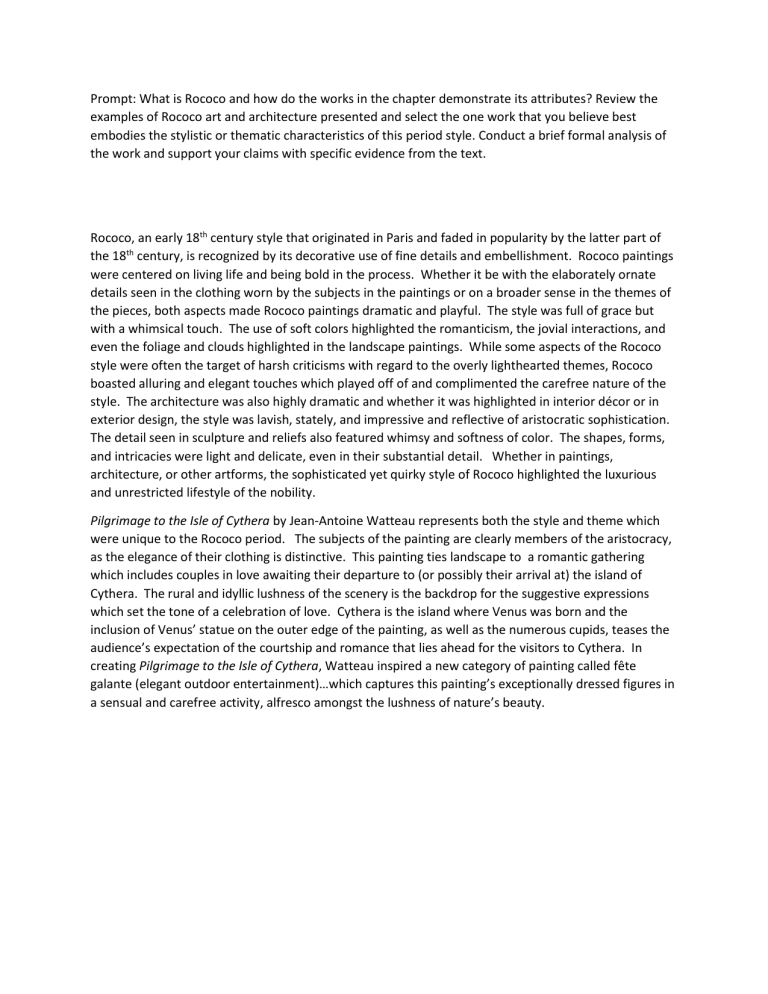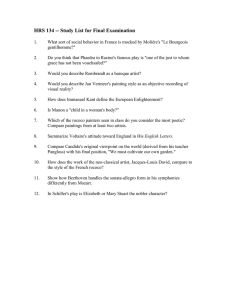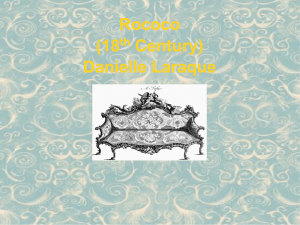
Prompt: What is Rococo and how do the works in the chapter demonstrate its attributes? Review the examples of Rococo art and architecture presented and select the one work that you believe best embodies the stylistic or thematic characteristics of this period style. Conduct a brief formal analysis of the work and support your claims with specific evidence from the text. Rococo, an early 18th century style that originated in Paris and faded in popularity by the latter part of the 18th century, is recognized by its decorative use of fine details and embellishment. Rococo paintings were centered on living life and being bold in the process. Whether it be with the elaborately ornate details seen in the clothing worn by the subjects in the paintings or on a broader sense in the themes of the pieces, both aspects made Rococo paintings dramatic and playful. The style was full of grace but with a whimsical touch. The use of soft colors highlighted the romanticism, the jovial interactions, and even the foliage and clouds highlighted in the landscape paintings. While some aspects of the Rococo style were often the target of harsh criticisms with regard to the overly lighthearted themes, Rococo boasted alluring and elegant touches which played off of and complimented the carefree nature of the style. The architecture was also highly dramatic and whether it was highlighted in interior décor or in exterior design, the style was lavish, stately, and impressive and reflective of aristocratic sophistication. The detail seen in sculpture and reliefs also featured whimsy and softness of color. The shapes, forms, and intricacies were light and delicate, even in their substantial detail. Whether in paintings, architecture, or other artforms, the sophisticated yet quirky style of Rococo highlighted the luxurious and unrestricted lifestyle of the nobility. Pilgrimage to the Isle of Cythera by Jean-Antoine Watteau represents both the style and theme which were unique to the Rococo period. The subjects of the painting are clearly members of the aristocracy, as the elegance of their clothing is distinctive. This painting ties landscape to a romantic gathering which includes couples in love awaiting their departure to (or possibly their arrival at) the island of Cythera. The rural and idyllic lushness of the scenery is the backdrop for the suggestive expressions which set the tone of a celebration of love. Cythera is the island where Venus was born and the inclusion of Venus’ statue on the outer edge of the painting, as well as the numerous cupids, teases the audience’s expectation of the courtship and romance that lies ahead for the visitors to Cythera. In creating Pilgrimage to the Isle of Cythera, Watteau inspired a new category of painting called fête galante (elegant outdoor entertainment)…which captures this painting’s exceptionally dressed figures in a sensual and carefree activity, alfresco amongst the lushness of nature’s beauty.







